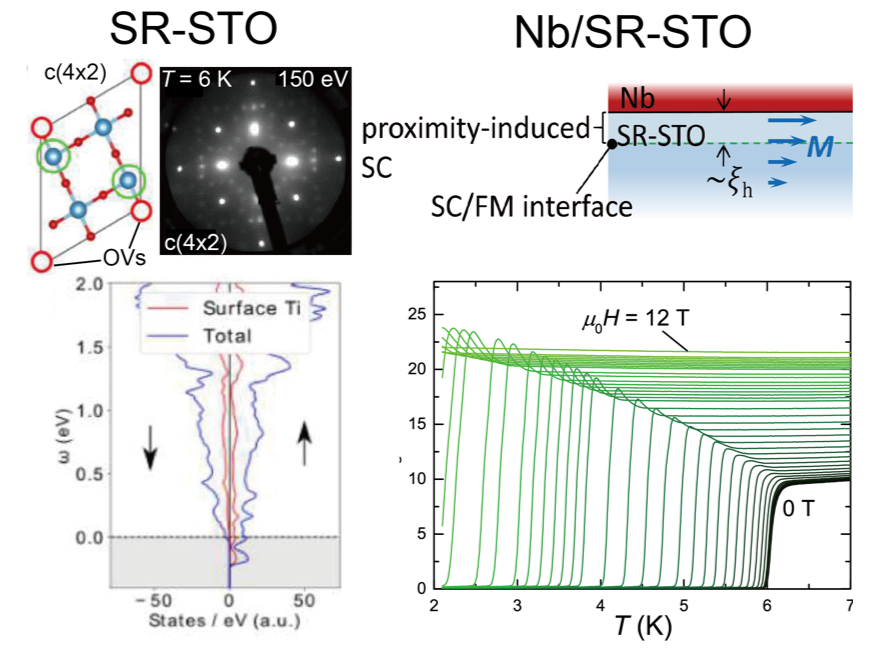Revelation of the exotic electronic states in surface-reconstructed SrTiO3
Oxygen vacancies (OVs) on the surface of a wide band-gap SrTiO3 (STO) were known to induce surface reconstructions (SR), which not only resulted in electron dopings but also was theoretically predicted to show magnetism with unusual spin-polarized in-gap states. Experimental confirmations for those exotic states are hampered by the difficulty of maintaining such surface structures under ambient conditions. In a recent collaborating work led by Dr. Wei-Li Lee at IoPAS and Prof. Wei-Cheng Lee at Binghamton University SUNY, such exotic electronic states in SR-STO were revealed by proximity coupling a superconductor (SC), serving as a probe and also a protection layer, to a SR-STO. Dr. Akhilesh Singh and Uddipta Kar, who are the first and the second authors of the paper, utilized the interconnected multi-UHV chambers facility at IoPAS. The SR-STO was prepared and characterized via electron diffraction under UHV followed by UHV deposition of superconducting niobium (Nb) thin films to ensure a clean interface between SC and SR-STO. An unusual and generic field-induced peak resistance effect was uncovered for the first time in such a hybrid SC/SR-STO system. Combining magnetization measurements and also detailed DFT calculations, we proposed a model based on the interface resistance between a SC and a highly spin-polarized metal that gives a self-consistent explanation to the observed field-induced peak resistance effect. Our results strongly support for the existence of spin-polarized in-gap states in SR-STO. The complete work has been published recently on npj Quantum Materials. (npj Quantum Mater. 5, 45 (2020) https://rdcu.be/b5rPk)
